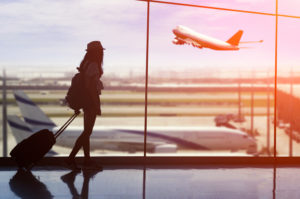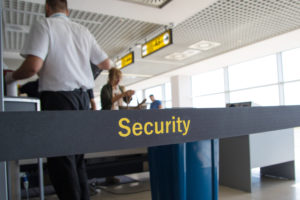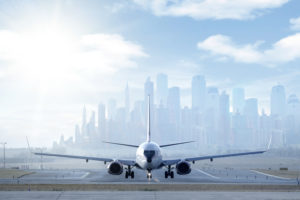We've polled our users on whether they think airlines should be "re-regulated," and a slight majority believe that dereg is just fine that way it is. But Demos, which describes itself as a non-partisan public policy research and advocacy organization, makes a convincing argument that deregulation has been a disaster all around.
Headquartered in New York City, Demos works with advocates and policymakers around the country in pursuit of four overarching goals:
- a more equitable economy with widely shared prosperity and opportunity;
- a vibrant and inclusive democracy with high levels of voting and civic engagement;
- an empowered public sector that works for the common good;
- and responsible U.S. engagement in an interdependent world.
Their June 26, 2009 media release makes interesting reading:
Contact: Tim Rusch, Demos, trusch@demos.org or (917) 399-0236
New Demos Report Examines Impact of Airline Deregulation
Safety, Labor and Passenger Concerns Highlighted; Calls for National Task Force to Investigate Air Travel Problems
View online at www.demos.org
New York--A spate of airline tragedies and near misses this year, including the crash of a Continental/Colgan flight heading into Buffalo, New York, have called America's attention to the deeply troubled state of the airline industry. Since 2000, U.S. airlines' net losses have exceeded $33 billion--almost twice their accumulated profits from 1938 to 1999. Eleven domestic airlines filed for bankruptcy protection in 2008 alone; nine shut down altogether. The surviving companies have slashed costs, with some resorting to steps that threaten passenger safety.
In "Flying Blind: Airline Deregulation Reconsidered", a wide-ranging new Demos report on the industry, co-authors James Lardner and Robert Kuttner point to preliminary findings in the Buffalo investigation that the pilot and co-pilot lacked crucial experience and training, and "down time" between flights. Since the crash, critics have raised questions about the little-known regional airlines that now handle a growing proportion of domestic flights, effectively acting as subcontractors to the big brand-name airlines. The major carriers have been widely faulted for farming out more and more flights to these smaller companies, which, in many cases, appear to have significantly less rigorous hiring and training standards.
The authors highlight that regional carriers now account for roughly 35 percent of all flight-hours, more than double the 16 percent share that these companies held at the beginning of the decade. At that time, the report shows, two-thirds of all heavy aircraft maintenance was performed in-house, while today more than 70 percent of the work is outsourced, leaving federal inspectors scrambling to keep up with nearly 5,000 repair facilities in the U.S. and abroad.
The report links these practices to a precipitous decline in service standards and labor practices. While many industry leaders blame the airlines' difficulties on the price of fuel and the current economic crisis, "Flying Blind" uncovers a three-decade-long pattern of declining profitability and rising instability. The industry ran up huge losses in the early 1980s and again in the early 1990s.
"Each of those periods, too, was marked by a wave of bankruptcies and layoffs," Lardner and Kuttner note. "The economic downturn of 2000 and 2001 sent the airline industry into another tailspin, with nine airlines filing for bankruptcy before September 11."
The report traces the industry's current troubles back to the decision, three decades ago, to lift most federal regulation of air travel.
"Deregulation was supposed to lead to a dramatically expanded universe of airlines--companies big and small, old and new, competing and innovating for the public benefit," the authors write. Instead, "Today's industry is more concentrated than ever, yet lacks the resources and motivation to make crucial investments in equipment, technology, and human capital. And most of the major U.S. airlines appear to have no long-term strategy except more of the same--more outsourcing, more service cutbacks and hidden charges, more wage and benefit reductions, and more consolidation in the hope of surviving long enough to be in a position to turn a profit and expand again during a future economic recovery."
Even many of the original champions of deregulation have acknowledged their failure to anticipate some of the key results. By the late 1980s, the economist Alfred Kahn, who has been called the "father of airline deregulation," was highlighting that the "naturally monopolistic or oligopolistic character of most airline markets...would continue under deregulation."
Kahn and others have taken refuge in the argument that deregulation has produced lower airfares and wider access to air travel. The Demos report concludes that even this benefit is widely overstated. "While the price of flying has come down over the past thirty years," the report notes, "it decreased at a comparable rate from the 1940 through the 1960s. In any event, low airfares are as much a problem as an achievement if they leave an industry without the resources to maintain service standards and make crucial investments in equipment, technology, and human capital."
The report makes clear an urgent need for Congress and the relevant executive agencies to make a thorough-going study of the industry's troubles. The authors recommend creation of a federal task force to examine the industry's problems and propose solutions. Specifically, they call on the task force to:
--Develop a plan to moderate the booms and busts and build a more stable domestic airline industry. Here, the remedies could include capital-reserve requirements and bankruptcy reform.
--Expedite (and establish stable financing for) a modernized Air Traffic Control (ATC) network.
--Develop coordinated national and regional transportation plans, with provision for high speed rail networks to eliminate the need for excessive short-haul air traffic.
--Devise a code of customer service that would, among other things, protect passengers from wildly varying prices and establish more uniform procedures for ensuring remuneration and rebooking when a flight is delayed or cancelled.
--Promote more equitable and stable labor practices and return to the pre-deregulation practice of pattern bargaining in order to discourage airline competition based on low wages and high-pressure working conditions.
--Insist on uniform airline safety standards, including mechanic credentials and oversight of maintenance facilities.
--Develop new regulations to curtail airline consolidation and promote genuine competition where feasible, while, at the same time, cracking down on monopoly pricing and the other abuses of concentration on routes that are incapable of supporting more than one or two carriers.
STATISTICAL HIGHLIGHTS:
--Out of roughly 150 low-cost airlines founded since 1978, fewer than a dozen are still operating; they account for only about 10 percent of current airline capacity.
--Before deregulation, there were 11 major trunkline carriers; today, the country has six large mainline carriers--American, United, Delta, Continental, US Airways, and Southwest. The first three, along with their regional partners, control two-thirds of domestic air travel.
--More than 100,000 pilots, mechanics, flight attendants, ticket agents, cargo handlers, and other airline workers who lost their jobs since 2001.
--The number of people on the payroll of the legacy airlines dropped 26 percent between 1998 and 2006.
--DOT Data for US Airways, United, Delta, American and Northwest show labor costs falling by nearly a third, on average, between the end of 2001 and the beginning of 2006.
--According to the U.S. DOT, 2008 total baggage-fee charges by U.S Airlines came to more than $1.1 billion--a figure that is expected to triple by 2010.
--In 2007, more than a quarter of all flights were delayed, accounting for 112 million lost passenger hours.
--More than 100 communities have lost air service over the past decade.





